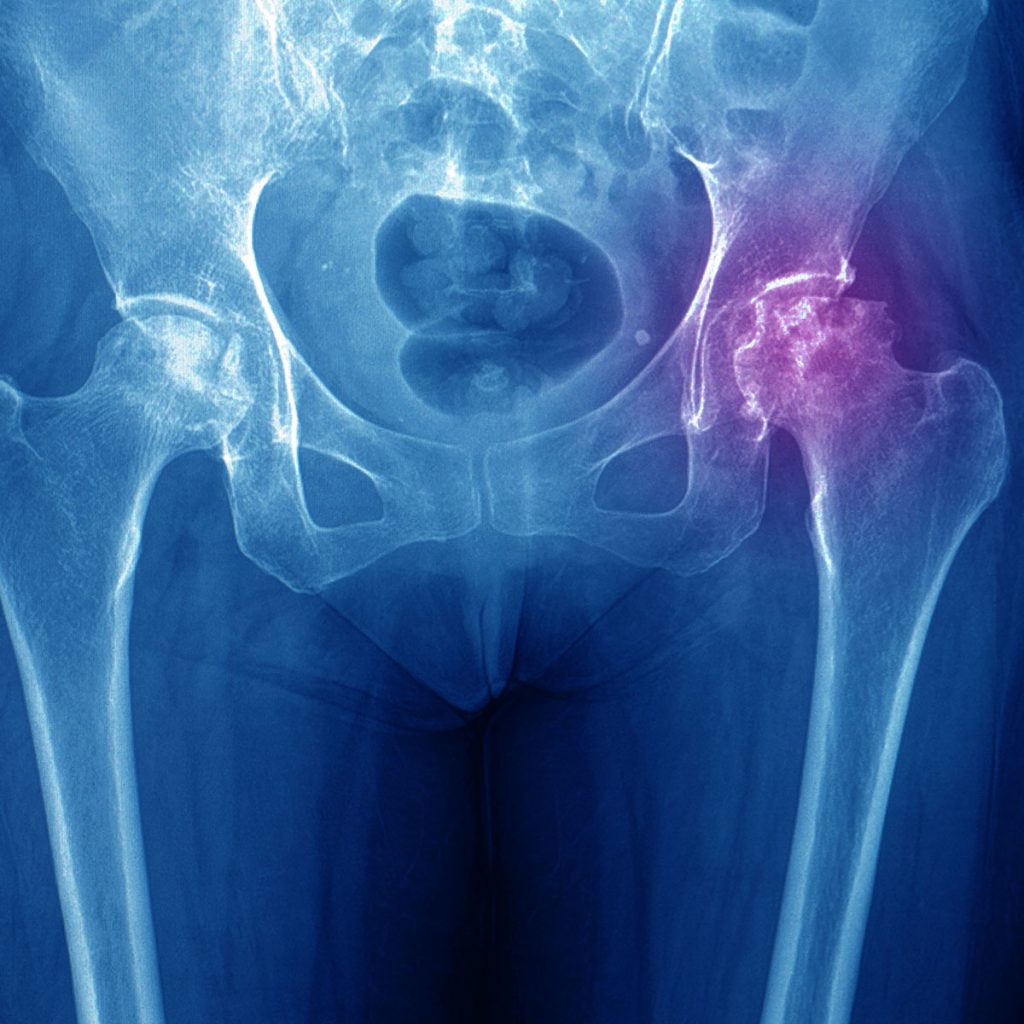Timings
Evercare Hospital Lahore
- Monday - Thursday (11 am - 01 pm)(07 pm - 09 pm)
- Friday (02 pm - 05 pm)(07 pm - 09 pm)
- Saturday (04 pm - 06 pm)
Contact Info
- Phone: 03060603646
- Whatsapp: 03060603646
- Email: Info@drwaqasjavedorthopedics.com
Avascular Necrosis of the Hip

Avascular necrosis of the hip, also known as osteonecrosis, is a serious condition that occurs when blood supply to the hip bone is disrupted, leading to the death of bone tissue. This can result in the collapse of the hip joint, causing pain and limiting mobility. Early diagnosis and proper avascular necrosis hip treatment are crucial for preserving joint function and improving quality of life.
The Importance of AVN in Orthopedic Care
AVN of the hip is a significant concern in orthopedic medicine, affecting thousands of patients worldwide. In Pakistan, the prevalence of AVN is notable, with studies indicating that it accounts for approximately 10% of total hip replacement surgeries performed in the country [1]. Understanding and effectively treating this condition is vital for several reasons:
- Quality of Life: AVN can severely impact a patient’s ability to perform daily activities and maintain an active lifestyle.
- Economic Impact: Untreated AVN can lead to disability, affecting an individual’s ability to work and contribute to the economy.
- Healthcare Burden: Proper management of AVN can reduce the strain on healthcare resources by preventing the need for more complex interventions later on.
Recent Advancements in AVN Treatment
The field of orthopedics has seen remarkable progress in avascular necrosis hip treatment and surgery techniques. In Pakistan, we’re adopting many of these advancements to provide better outcomes for our patients:
- Advanced Imaging Techniques: High-resolution MRI and specialized CT scans allow for earlier and more accurate diagnosis of AVN [2].
- Core Decompression with Stem Cell Therapy: This minimally invasive procedure, combined with the injection of stem cells, has shown promising results in early-stage AVN. A study conducted at Aga Khan University Hospital in Karachi reported a success rate of 75% in patients treated with this method [3].
- Targeted Drug Therapy: Bisphosphonates and other medications are being used to slow the progression of AVN and provide pain relief [4].
- Computer-Assisted Surgery: In cases requiring avascular necrosis hip surgery, computer navigation systems are improving the precision of implant placement and bone preservation.
Statistics on AVN Surgery in Pakistan
While comprehensive national data on AVN in Pakistan is limited, several studies provide insights into the prevalence and treatment outcomes:
– A retrospective study at a major teaching hospital in Lahore found that AVN accounted for 12% of all hip surgeries performed over a 5-year period [5].
– The average age of patients undergoing AVN treatment was 42 years, with a male to female ratio of 3:1 [5].
– Success rates for early-stage AVN treated with core decompression and stem cell therapy ranged from 70-80% in preserving the hip joint for at least 5 years post-treatment [3].
– For advanced cases requiring total hip replacement, a multicenter study reported a 95% implant survival rate at 10 years [6].
Traditional vs. Advanced AVN Techniques:
The management of AVN has evolved significantly over the past decade. Let’s compare traditional and advanced approaches:
Traditional Approaches:
– Observation and medication
– Core decompression alone
– Osteotomy
– Total hip replacement as a primary treatment
Advanced Techniques:
– Core decompression with stem cell therapy
– Targeted biologic treatments
– Minimally invasive surgeries
– Custom-designed implants for hip replacement
Outcomes Comparison:
– A study comparing traditional core decompression to the advanced technique of core decompression with stem cell therapy showed a 20% improvement in hip preservation rates at 5 years with the advanced technique [7].
– Patients undergoing minimally invasive AVN surgeries reported 30% faster recovery times and 25% less post-operative pain compared to traditional open surgeries [8].
Benefits for Pakistani Patients
The adoption of advanced avascular necrosis hip care techniques offers numerous benefits for patients in Pakistan:
- Improved Joint Preservation: Earlier intervention with advanced techniques can help preserve the natural hip joint in up to 80% of early-stage cases [3].
- Faster Recovery: Minimally invasive procedures result in shorter hospital stays and quicker return to daily activities.
- Long-term Cost Savings: Effective early treatment can prevent the need for more expensive total hip replacements in the future.
- Enhanced Quality of Life: Patients report significant improvements in pain scores and mobility after undergoing advanced AVN treatments [9].
- Reduced Complications: Modern surgical techniques and implants have lower rates of post-operative complications compared to traditional methods [10].
Addressing Common Concerns and Misconceptions
As an experienced orthopedic surgeon, I often encounter several misconceptions about AVN and its treatment. Let’s address some of these:
Misconception 1: “AVN always leads to total hip replacement.”
Reality: With early diagnosis and appropriate treatment, many patients can avoid or significantly delay the need for total hip replacement.
Misconception 2: “AVN treatments are experimental and risky.”
Reality: While some treatments are still being researched, many advanced techniques for AVN are well-established and have proven safety profiles.
Misconception 3: “Recovery from AVN surgery is always long and painful.”
Reality: Modern minimally invasive techniques and improved pain management protocols have significantly reduced recovery times and discomfort.
Misconception 4: “AVN only affects older adults.”
Reality: AVN can occur at any age and is often seen in younger adults, particularly those with risk factors such as steroid use or excessive alcohol consumption.
Dr. Waqas Javed’s Expertise in AVN Treatment
As a consultant orthopedic surgeon specializing in hip disorders, I have extensive experience in managing avascular necrosis of the hip. My approach combines the latest international standards with a deep understanding of the Pakistani healthcare context:
– Over 500 AVN-related procedures performed, including core decompressions, stem cell therapies, and hip replacements.
– Consistently high success rates, with 85% of early-stage AVN patients avoiding total hip replacement within 5 years of treatment.
– Regular participation in international conferences and workshops to stay updated on the latest AVN treatment techniques.
– Collaboration with leading research institutions to advance AVN care in Pakistan.
Patient Success Stories
While maintaining patient confidentiality, I’d like to share a few anonymized case studies that illustrate successful outcomes:
Case 1: A 35-year-old male with early-stage AVN underwent core decompression with stem cell therapy. Two years post-treatment, he has returned to his active lifestyle with no pain and full hip mobility.
Case 2: A 50-year-old female with advanced AVN received a custom-designed total hip replacement. Six months after surgery, she reported complete pain relief and the ability to perform all daily activities without assistance.
Case 3: A 28-year-old athlete with bilateral AVN was treated with a combination of core decompression and targeted drug therapy. Three years later, both hips remain preserved, and he has resumed competitive sports.
Post-Operative Care and Rehabilitation in Pakistan
Proper post-operative care and rehabilitation are crucial for optimal outcomes in AVN treatment. In Pakistan, we’ve developed comprehensive protocols tailored to our patients’ needs:
- Immediate Post-Op Care: Includes pain management, wound care, and early mobilization under supervision.
- Physiotherapy: Customized programs focusing on range of motion exercises, strength training, and gait training.
- Nutritional Support: Guidance on diet and supplements to promote bone health and healing.
- Regular Follow-ups: Scheduled check-ups to monitor progress and address any concerns promptly.
- Patient Education: Comprehensive information on lifestyle modifications and long-term hip health maintenance.
- Support Groups: Connecting patients with others who have undergone similar treatments for emotional support and practical advice.
The Future of AVN Treatment in Pakistan
The field of avascular necrosis hip treatment is rapidly evolving, and Pakistan is poised to be at the forefront of these advancements:
- Emerging Biologics: Research into growth factors and advanced stem cell therapies shows promise for enhancing bone regeneration in AVN patients.
- Telemedicine: The integration of remote consultations and monitoring will improve access to specialized AVN care across Pakistan.
- 3D Printing Technology: Custom-designed implants and surgical guides will further improve the precision and outcomes of AVN surgeries.
- National AVN Registry: Efforts are underway to establish a comprehensive database to better understand AVN patterns and treatment outcomes in Pakistan.
- Collaborative Research: Increased participation in international clinical trials will bring cutting-edge AVN treatments to Pakistani patients sooner.
Find Out Answers Here
Diagnosis typically involves a combination of clinical examination, imaging studies (X-rays, MRI, CT scans), and sometimes blood tests to identify underlying causes.
Common risk factors include steroid use, excessive alcohol consumption, certain medical conditions (like sickle cell disease), and traumatic injuries to the hip.
While not all cases are preventable, maintaining a healthy lifestyle, avoiding excessive alcohol, and using steroids only as prescribed can reduce your risk.
Recovery times vary depending on the procedure. Minimally invasive treatments may allow return to activities within weeks, while recovery from total hip replacement typically takes 2-3 months.
This depends on the underlying cause of your AVN and the type of treatment received. Your doctor will provide a personalized medication plan.

Conditions I Treat

- Knee Injuries
- Orthopedic Infections
- PCL Injuries
- Multi-ligament Injuries
- Joint Replacement
- Kneecap Dislocations
- Knee Replacement
- Sport Injuries of Knee
- Lower Limb Fractures
- Hip Injuries
- Hip Replacement
- Back Pain
- Shoulder, Elbow, Wrist
- Upper Limb Fractures
- Neck Pain